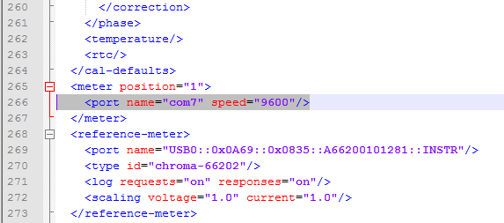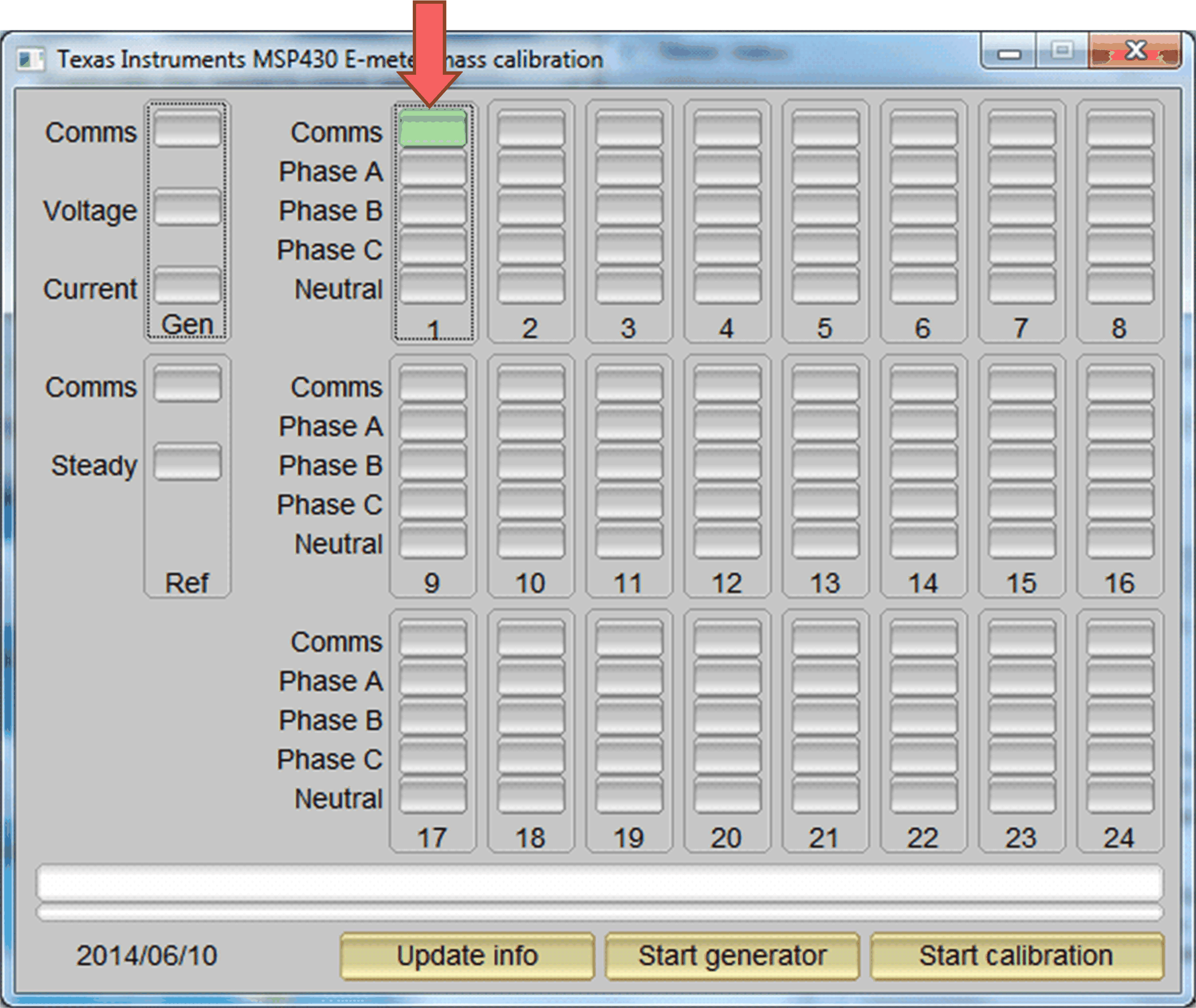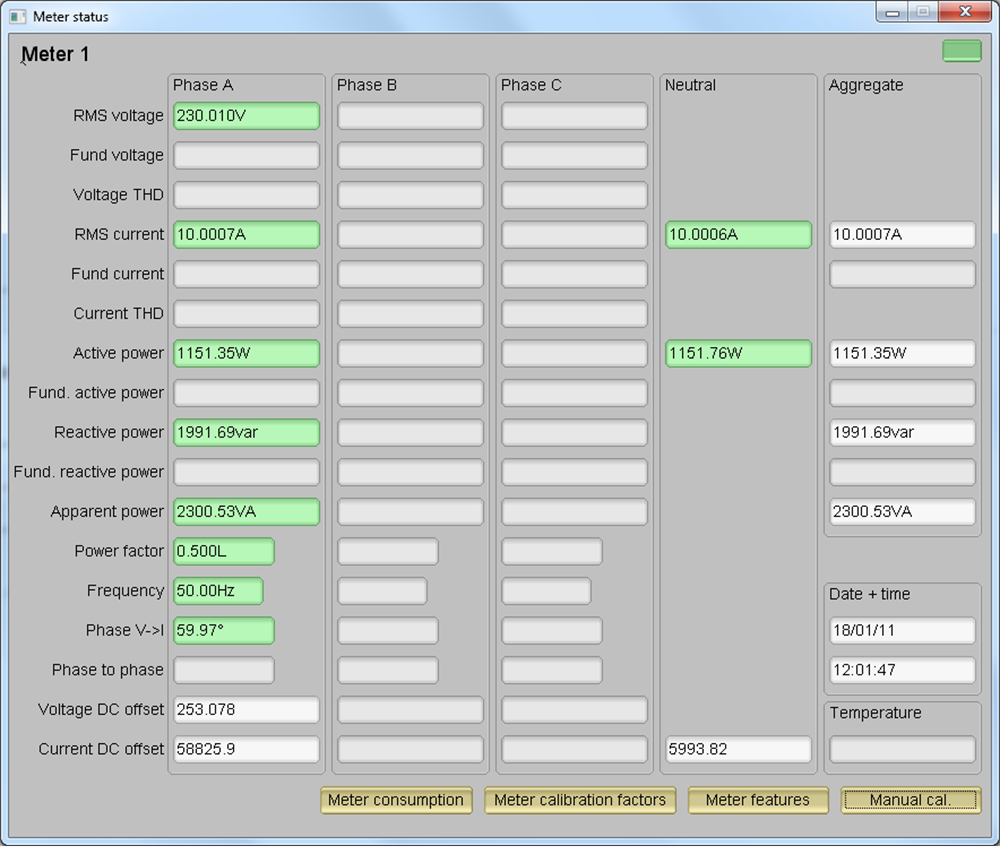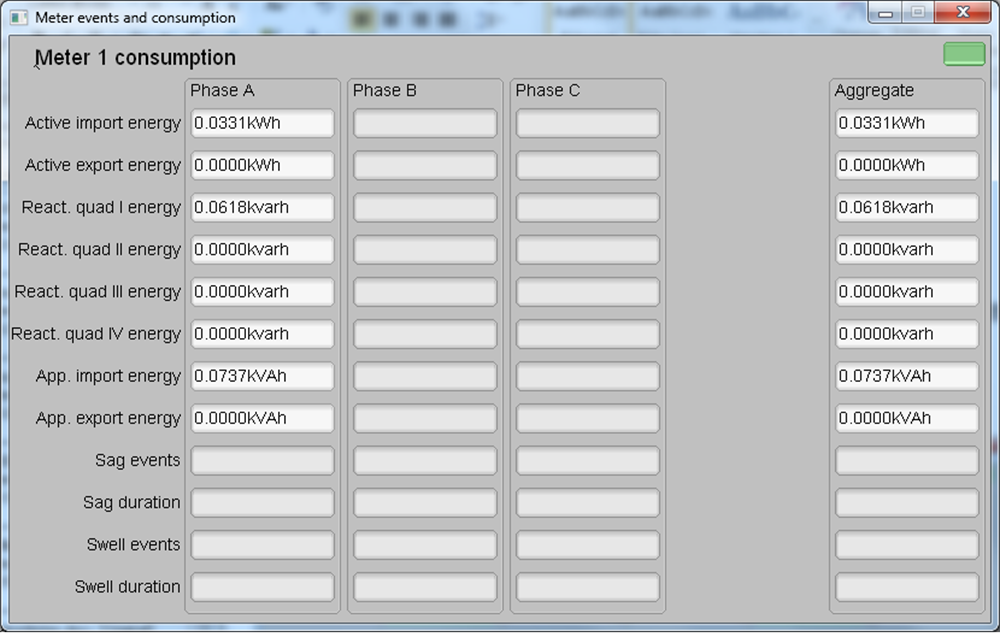TIDUF98A October 2024 – February 2025
- 1
- Description
- Resources
- Features
- Applications
- 6
- 1System Description
- 2System Overview
- 3Design Files
- 4Related Documentation
- 5About the Authors
- 6Revision History
2.4.2.1.1.2 Viewing Results From PC GUI
To view the metrology parameter values from the GUI, perform the following steps:
- Select whether to use the RS-485 or UART connection for communication to the PC GUI. The testing was done using UART with 9600, 8N1 setting on pins PA8 and PA9.
- Connect the reference design to a PC:
- UART option: Connect the reference design to a PC using a UART cable, wired to pins PA8 and PA9, or pin 22 and 23, respectively. Blue wires to pins 4 and 5 of U11, which is the RS-485 isolation device, are used in this case.
- RS-485 option: Use a USB to RS-485 adapter to communicate between the PC GUI and the RS-485 port on this design. The USB to RS-485 adapter needs to create a COM port on the PC when plugged in. The other end of the adapter needs to have wires for the RS-485 Data A and Data B connections as well as a GND connection and a 3.3V power connection.
- Open the GUI folder and open calibration-config.xml in a text editor.
- Change the port name field
within the meter tag to the COM port connected to the system. As Figure 2-7 shows, this field is changed to COM7.
 Figure 2-7 GUI Configuration File Changed to Communicate With Energy Measurement
System
Figure 2-7 GUI Configuration File Changed to Communicate With Energy Measurement
System - Run the calibrator.exe file,
which is located in the GUI folder. If the COM port in the
calibration-config.xml was changed in the previous step to the COM
port connected to the reference design, the GUI opens (see Figure 2-8). If the GUI connects to the design properly, the top-left button is green.
If there are problems with connections or if the code is not configured
correctly, the button is red. Click the green button to view the results.
 Figure 2-8 GUI Startup Window
Figure 2-8 GUI Startup Window
When clicking the green button, the results window opens (see Figure 2-9). In the figure, there is a trailing "L" or "C" on the Power factor values to indicate an inductive or capacitive load, respectively. Note that by default, the column in the GUI labeled "Phase A" is actually the shunt channel and the column labeled "Neutral" is actually the CT channel. If the system and shunt is referenced with respect to the neutral, the shunt can actually measure the neutral current and the CT can measure the line current, unlike how the GUI is labeled.
 Figure 2-9 GUI
Results Window
Figure 2-9 GUI
Results WindowFrom the results window, the total-energy consumption readings can be viewed by clicking the Meter Consumption button. After the user clicks this button, the Meter events and consumption window pops up, as Figure 2-10 shows.
 Figure 2-10 Meter
Events and Consumption Window
Figure 2-10 Meter
Events and Consumption WindowFrom the results window, the meter settings can be viewed by clicking the Meter features button, view the system calibration factors by clicking the Meter calibration factors button, or open the window used for calibrating the system by clicking the Manual cal. button.